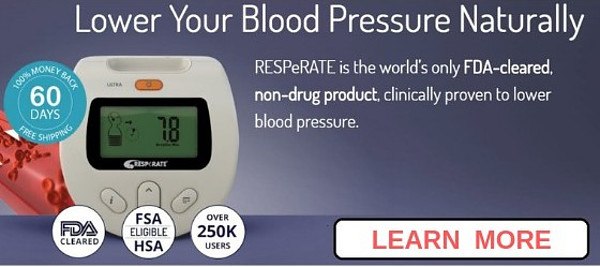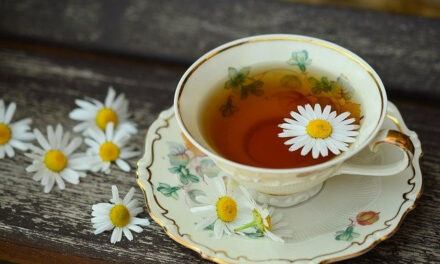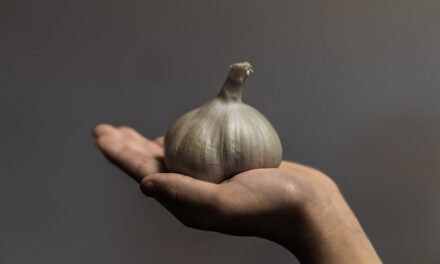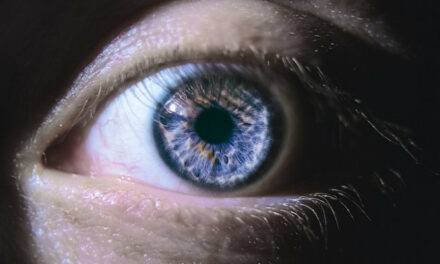High blood pressure, also known as Hypertension, has become far more prevalent in today’s stressful hustle and bustle. The lifestyles we live, our food habits, lack of sleep or poor sleeping patterns and, of course, stress all have to lead to an alarming increase in the number of people suffering from hypertension.
In this article, we discuss answers to the question ‘What is The Best Treatment for Hypertension?’
 Tip: We got separate articles about the Causes of High Blood Pressure and Symptoms of High Blood Pressure.
Tip: We got separate articles about the Causes of High Blood Pressure and Symptoms of High Blood Pressure.

What Defines High Blood Pressure?
So, What is Hypertension really? Medicine explains it as “a long-term medical condition in which the blood pressure in the arteries is persistently elevated.” In layman’s terms, it occurs when the blood flowing through the body’s vessels exerts excessive pressure for an extended period of time. A blood pressure measuring higher than 140 or 90 at more than one reading is considered to be high, and investigation would need to take place. Blood pressure measurements fall into four categories; ● Normal blood pressure. Your blood pressure is considered ‘normal’ when it’s below 120 (systolic)/80 (diastolic) mm Hg. ● Elevated blood pressure. Elevated blood pressure is a systolic pressure ranging from 120 to 129 mm Hg and diastolic pressure at or below 80 mm Hg. Unless steps are taken to control blood pressure, the elevated blood pressure tends to get worse over time. ● Stage 1 hypertension. It is considered ‘Stage 1 hypertension’ when the systolic pressure ranging between 130- and 139- mm Hg or the diastolic pressure ranging between 80- and 89- mm Hg. ● Stage 2 hypertension. This more severe hypertension, when the systolic pressure jumps over 140 mm Hg or the diastolic pressure over 90 mm Hg, that condition is referred to stage 2 hypertension. Tip: Follow the link to learn more about Stages of High Blood Pressure.What Causes Blood Pressure To Spike?
Ascertaining the reason for elevated blood pressure or hypertension can be complex, with doctors categorizing hypertension as below. Having no identifiable cause, i.e. lifestyle, genetic or weight, or With an identifiable cause, i.e. a medical issue such as kidney disease, medication contraindication e.t.c.Causes of Hypertension in Men vs Women
Before the age of fifty, men are at a higher risk of developing hypertension than women. However, after the age of fifty, once menopause has begun, women have at a higher risk. For men, a greater blood pressure load on their organs is the primary cause of hypertension when compared to women. Likewise, external factors such as alcohol, stress, and cigarette smoke have a higher likelihood of affecting men more than their female counterparts whereas women are more likely to be affected by the onset of menopause, obesity and the use of the contraceptive pill. Although doctors will be the first to admit that these lines are blurred significantly with causes, such as obesity, alcohol and stress. A few common scenarios of causes of high blood pressure, their effects and tips to reverse high blood pressure for men and women are noted below.
Causes of Hypertension in Men vs Women by MediChannel

How to Diagnose Hypertension in Stage 1 and Stage 2?
During your consultation with your doctor, you are likely to have two or three blood pressure readings taken at different appointments before the doctor diagnoses you with high blood pressure. This is because your blood pressure is in a constant state of flux and is different at different times of the day. In fact, seeing the doctor can, in itself, cause an elevated blood pressure reading. If your physician suspects hypertension, you can expect your readings to be taken from both arms in order to establish a good average of what your blood pressure is. You may also be asked to monitor your blood pressure at home, recording what the numbers are throughout your day. It is important to note that both the diastolic, lower number and systolic, the higher number is noted. Both of these numbers are equally important. However, after the age of fifty, the systolic reading has a greater significance to what your treatment plan will be. Once your physician has established that you have hypertension you will be grouped into stage 1, elevated blood pressure above the normal limit but between 130/80 and 139 over 89, or stage 2; elevated blood pressure of more than 140/90. At this stage, a host of tests may be performed ranging from a blood test, cholesterol test, ECG and urinalysis. These, along with your medical history, blood pressure readings and the physical exam your doctor has performed are critical in obtaining the correct treatment for hypertension. Tip: We got Best Home Blood Pressure Monitors covered in a review too.Best Treatments for Hypertension
While diet, exercise and lifestyle changes do go a long way in helping to manage your blood pressure, sometimes these changes are just not enough.Western Medicine for Hypertension
Stage 1 hypertension is usually effectively managed with a complete positive lifestyle change. However, your physician may include any of the medications listed in stage 2 below as a precautionary measure in order to manage your blood pressure. Stage 2 hypertension usually requires medicinal intervention along with a complete positive lifestyle change. The list of medications used may be daunting; however, when used in conjunction with a healthy lifestyle, they have proven to be incredibly effective. Thiazide diuretics. Usually, the first line of treatment, diuretics, or water pills, are a medication that works on your kidneys to help your body eliminate sodium and water. Thiazide diuretics include chlorthalidone, hydrochlorothiazide (Microzide) as well as some others. Angiotensin-converting enzyme (ACE) inhibitors. Medications like lisinopril (Zestril), benazepril (Lotensin), captopril (Capoten) help to relax blood vessels by halting the formation of a natural chemical that narrows blood vessels. Angiotensin II receptor blockers (ARBs). Where ACE inhibitors halt the formation, these natural chemicals ARBs help relax blood vessels by blocking the action that narrows blood vessels. These medications include candesartan (Atacand) and losartan (Cozaar) and others. Calcium channel blockers. Amlodipine (Norvasc) and diltiazem (Cardizem, Tiazac, others) relax the muscles of your blood vessels and some slow the heart rate.Alpha-blockers.Doxazosin (Cardura), prazosin (Minipress) are medicines that reduce nerve impulses to blood vessels. Alpha-beta blockers. These medications not only reduce the nerve impulses to blood vessels but slow the heartbeat to reduce the amount of blood that must be pumped through the vessels. These medications include carvedilol (Coreg) and labetalol (Trandate). Beta-blockers. Beta Blockers reduce the load on your heart by opening your blood vessels This, in turn, causes your heart to beat slower. These medications included acebutolol (Sectral), atenolol (Tenormin) and others. Aldosterone antagonists. Spironolactone (Aldactone) and eplerenone (Inspra) block the effect of a natural chemical that can lead to salt and fluid retention. Renin-inhibitors. Aliskiren (Tekturna) slows down the production of renin. This enzyme produced by your kidneys has the ability to start a chemical chain reaction that increases blood pressure. Vasodilators. Hydralazine and minoxidil work on the muscles in the walls of your arteries, preventing the muscles from tightening and your arteries from narrowing. Central-acting agents. Clonidine (Catapres, Kapvay), guanfacine (Intuniv, Tenex) and methyldopa prevent the brain from signalling your nervous system to increase your heart rate. While you will not be placed on all of the above medications, often times, you will need to take a low dose of more than one of these in order to manage your hypertension. Tip: Do not self-medicate. Always seek doctor’s advice before considering any of the above treatments.What is a Pulmonary Hypertension?
Pulmonary hypertension (PH or PHTN) affects the arteries in the lungs and the right side of the heart. In one of its forms, the disease narrows and blocks the capillaries in the lungs, raising the pressure within the lungs. In turn, the right ventricle in the heart must work harder to pump blood to the lungs, ultimately leading to heart failure. While some forms of pulmonary hypertension are more severe than others and are not curable, medication can be used to ease the symptoms and improve life quality.How is Pulmonary Hypertension Diagnosed?
Pulmonary hypertension is difficult to diagnose and often times is not detected until symptoms are advanced. Your physician will order a barrage of tests which may include; Echocardiogram. An echocardiogram assists physicians in checking the size and function of the right ventricle of the heart, and the right ventricle’s wall thickness. An echocardiogram can also show how precisely your heart valves are working. Chest X-ray. An X-ray has the ability to show images of your heart, lungs and chest. This test can show the enlargement of the right ventricle of the heart or the pulmonary arteries. Electrocardiogram (ECG). This test shows your heart’s electrical patterns, detecting abnormal rhythms. Right heart catheterization. Should your physician suspect pulmonary hypertension, a right heart catheterization will be ordered. This test can help confirm if you have pulmonary hypertension, and to determine the severity of your condition. Blood tests. Blood tests detect certain conditions that may be causing your condition. Computerized tomography (CT) scan. CT scans generate X-rays to produce cross-sectional images of your body assisting doctors to understand the heart’s size and function. CT scan also can help to check for blood clots in the lungs’ arteries. Magnetic resonance imaging (MRI). This scan may be used to check the right ventricle’s function and the blood flow in the lung’s arteries. The medical practice considers MRI to be highly effective in diagnosis than a CT, ultrasound or X-ray investigation. Pulmonary function test. During the lung function test, you’ll blow into a simple instrument called a spirometer which measures how much air you can hold in the lungs as well as the airflow in and out of the lungs. Polysomnogram. This test detects your blood pressure, brain activity, oxygen levels, heart rate, and other factors while you sleep. This test is not something regularly used for diagnosing high blood pressure. Ventilation/perfusion (V/Q) scan. A tracer is injected into a vein in the arm, which allows the physician to map out the blood flow and air into the lungs. Open-lung biopsy. On rare occasions may recommend an open-lung biopsy.Pulmonary Hypertension Treatment Options
Pulmonary hypertension cannot be cured when the cause is non-modifiable (e.g. genetics) or unknown; however, doctors can assist in managing symptoms and slow the progress of the condition. Where another cause causes pulmonary hypertension, this will be treated with a hope to reverse the condition. Key treatments (tablets) used in the management of pulmonary hypertension is noted below. Blood vessel dilators (vasodilators). Vasodilators open narrowed blood vessels. Epoprostenol (Flolan, Veletri) is often administered via a catheter and a small pump that is worn in a pack on a belt or shoulder. Another drug, Treprostinil (Tyvaso, Remodulin, Orenitram), can be given four times a day via inhalation or orally. Endothelin receptor antagonists. These medications reverse the effect of endothelin. They improve energy levels and as well as other symptoms. These include macitentan (Opsumit), bosentan (Tracleer), and ambrisentan (Letairis). Tadalafil and Sildenafil. Tadalafil (Cialis, Adcirca) and Sildenafil (Revatio, Viagra) are a frontline treatment in pulmonary hypertension. Tadalafil and Sildenafil work by easing the blood flow through the blood vessels in the lungs to allow blood to flow through more efficiently. High-dose calcium channel blockers. Amlodipine (Norvasc), nifedipine (Procardia, others) and diltiazem (Cardizem, Tiazac, others) are drugs that help to relax the muscles in your blood vessel walls. Soluble guanylate cyclase (SGC) stimulator. Soluble guanylate cyclase (SGC) stimulators (Adempas) interact with nitric oxide and help relax the pulmonary arteries and lower the pressure within the arteries. Anticoagulants. Anticoagulant warfarin (Coumadin, Jantoven) is used to help prevent the formation of blood clots within the small pulmonary arteries. Digoxin. Digoxin (Lanoxin) helps control the heart rate and assists the heart pump more blood. Diuretics. Diuretics, or water pills, are a medication that works on your kidneys to help your body eliminate sodium and water. Thiazide diuretics include chlorthalidone, hydrochlorothiazide (Microzide) as well as some others. Oxygen. Oxygen therapy is used to help treat pulmonary hypertension, especially in higher altitudes or have sleep apnea. Tip: Do not self-medicate. Always seek doctor’s advice before considering any of the above treatments.Primary Hypertension Treatment vs Secondary Hypertension Treatment
Primary hypertension differs from secondary hypertension in that primary hypertension has no clear cause and is thought to be linked to diet, lack of exercise, obesity or genetics. In contrast, Secondary hypertension is caused by an identified underlying condition that has the ability to affect the kidneys, arteries, heart, and endocrine system. Therefore, the treatment of secondary hypertension oftentimes controls both the cause and hypertension, thereby reducing the Risks of Complications of Hypertension, dramatically reducing kidney failure, strokes and heart disease.Treatments for Secondary Hypertension
As mentioned above, there is an arsenal of drugs that can be used in combatting both primary and secondary hypertension. In cases where the arteries are narrowed, surgery may be used to alleviate or correct the issue. It is, however, important to note that surgery is not an option for all patients. Often times, antihypertensive drug therapy will be used in conjunction with treatments for any underlying conditions for secondary hypertension.The difference of Systolic and Diastolic Blood Pressure | Systolic vs Diastolic Hypertension
Diastolic blood pressure is the pressure on the walls of your arteries between heartbeats. Normal diastolic blood pressure is when the pressure is less than 80 but not lower than 60. Systolic blood pressure is the pressure on the walls of your arteries on the heartbeat. This number should be less than 120.Systolic Hypertension Treatment
All kinds of high blood pressure slowly damage the arteries. Low-density lipoprotein (LDL) cholesterol buildup in the damaged blood vessels forming plaque, narrowing the arteries and increasing blood pressure. This often leads to a heart attack and a stroke. Less serious, but equally debilitating, other symptoms include loss of eyesight and kidney failure. The statistics show that more than 30% of women over the age of 65 and more than 20% of men over the age of 65 suffer from systolic blood pressure issues. Those with African genetics carry a higher risk than those who do not. Systolic Hypertension can be managed with prescribed medication such as diuretics, beta-blockers, ACE’s, ACR’s, ARBs, Renin inhibitors (as noted above). Diastolic blood pressure is slightly more complex to manage and needs to be managed closely with your doctor in order to bring it within the normal range but not less than 60. Diastolic blood pressure below 60 can lead to heart damage and an increased risk of heart disease.Alternative Treatment for High Blood Pressure
While a healthy diet and exercise are definitely key to lowering your blood pressure, other complementary alternative medicines are available to assist in managing hypertension. With more and more studies being conducted into alternative medicines are gaining momentum. It is, however, worth mentioning that your physician should still be consulted before trying any alternative medicines too.1. Stress Management for hypertension
The process in your body that makes the heart beat faster and raise blood pressure is oftentimes caused by stress. Although stressing every now and again is normal, stress over an extended period of time, however, is detrimental to your health. By using calming techniques, you are effectively able to manage your stress levels pausing the raise of blood pressure. Let’s explore some stress management techniques which could lower high blood pressure. Qi Gong Based on traditional Chinese medicine, Qi Gong combines slow movement, breathing and meditation. Although it doesn’t work quite as well as medication in lowering your blood pressure, it does, over a period of time assist in managing stress. Breathing Exercises Slow, controlled breaths send calming signals to your brain and nervous system, helping to lower stress levels and along with it hypertension. Meditation Sitting quietly, whilst repeating a phrase has been proven to have a relatively good impact on lowering spiked blood pressure. Whilst most forms of meditation does work. T.M. seems to have the greatest effect. Tai Chi A slow, gentle form of exercise, tai chi is a mixture of traditional Chinese medicine and martial arts. Studies suggest that tai chi works as well as some blood pressure medications. Yoga Although helpful in managing high blood pressure, yoga needs to be used only under a doctor’s care. Tip: You is one of the Best Exercise for Diabetes too. Hypnosis A powerful tool to help manage stress and anxiety, hypnotherapy is often used to calm and relax patients. Biofeedback Treatment By attaching small sensors to your muscles, Biofeedback treatment can treat a range of issues, including blood pressure. Acupuncture The jury is still out on whether acupuncture is effective in treating high blood pressure. Some say it works well whilst others are more skeptical. Tip: Acupuncture could help with Diabetes-related Leg Pain. Herbs and Supplements Although research is still limited, certain herbs and supplements do seem to support high blood pressure management. (I have noted about supplements more in detail below) Other Alternative Remedies Whilst we have touched on the alternative remedies used for treating, an in-depth evaluation is often needed before embarking on a natural healing solution.Below, we have highlighted some of the most effective treatments and explained how they work in combatting hypertension. Tip: Did you know the Stress Symptoms in Men and Stress Symptoms in Women can be different? Just follow the links to read our popular articles about stress.2. Vitamins and Supplements for high blood pressure
Often, a lack of vitamins and minerals, years of abuse of substances and foods that are unhealthy and a generally unhealthy lifestyle is to blame elevated blood pressure. ● Folic Acid Taking high doses of folic acid have shown to reduce the blood pressure slightly in both men and women. While folic acid is an essential vitamin needed in the development of a fetus’s brain and in the blood pressure health of pregnant women. ● Vitamin D Low levels of vitamin D have a definitive link to hypertension, although replenishing vitamin D levels seem to have a minor effect on diastolic blood pressure and absolutely no effect on systolic pressure. It is, therefore important to ensure that vitamin D levels are kept adequate before the onset of hypertension. ● Magnesium Magnesium is used to regulate healthy cell function and assists in muscle fire contractions. Magnesium supplements have shown to have a minor effect on stabilising blood pressure. ● Potassium Potassion is the number one natural mineral to counteract the effects of sodium on blood pressure. The American Heart Association states that potassium helps to decrease pressure on arterial walls and is highly effective in lowering blood pressure. ● CoQ10 Coenzyme Q10 is a powerful antioxidant that assists cells in energizing themselves. In clinical trials, CQ10 was shown to bring down diastolic blood pressure by up to 10 points and systolic blood pressure by up to 17 points. ● Fiber Dietary fibre has been steadily declining in the typical Western diet of late. By increasing your fibre intake hypertension can be prevented and even lowered fractionally. ● Acetyl L Carnitine (ALCAR) ALCAR is used by the body to create energy. Possibly one of the most promising supplements available to control blood pressure, ALCAR is very well tolerated by most people and is relatively cost-effective. ● Garlic Garlic has long been used as a diuretic and circulation treatment. It improves the overall way the body circulates blood through the system and has been shown to have a positive effect on both diastolic and systolic pressures. ● Melatonin Melatonin aids the body in its natural sleep and relaxation process. Studies have shown that melatonin deficiency is often linked to those suffering from hypertension. By taking a melatonin supplement, researchers found that blood pressure often reduced. ● Omega 3’s Omega 3 Fatty Acids are known to help the body improve cardiovascular tone making it a powerful tool in lowering blood pressure. Omega 3’s are usually found in fish oil supplements and flaxseed supplements and are well tolerated by most people. ● Anthocyanins The red, purple and blue pigments found in certain fruits and vegetables, Anthocyanins have been known to bring down systolic blood pressure by up to 12 per cent over the course of a year. More studies need to be conducted on the effects, but preliminary statistics do look promising. ● French Maritime Bark Extract (FMBT) FMBT extract is a powerful flavonoid enriched antioxidant. Derived from French maritime bark, FMBT has been shown to improve circulation and lower blood pressure in as little as twelve weeks.3. Exercise for high blood pressure
● Aerobic Physical activity, if done regularly, has been shown to make the heart stronger. A stronger heart can pump more blood throughout the body with less effort, thus decreasing the amount of force exerted on the arteries. By becoming more physically active, you actually have the ability to lower your systolic blood pressure on average by 4 to 9 points which is what some blood pressure medications are only now starting to boast. It is noteworthy, though, that exercise may not be enough to reduce blood pressure in all people, and a physician should always be consulted before a new exercise regime is started. Regular exercise is defined as 75 minutes of vigorous exercise a week or 30 minutes of moderate to mild exercise most days of the week. It is important to note that when exercise is spoken about, it is aerobic exercise such as jogging, swimming, household chores, cycling etc. Weight lifting has been shown to increase blood pressure temporarily and should be shied away from in the event of hypertension. By setting aside three 10 minute sessions of intense cardio per day and filling the rest of your free time with low impact activity, aerobic exercise is easily achieved. ● Yoga With regular practice, yoga has been known to;● Improve digestion, circulation and immunity● Enhance the neurological and endocrine function and related organs● Yoga can prevent and provide relief from chronic illnesses, such as:- high blood pressure
- Chronic pain syndromes
- Anxiety and panic disorders (Not to be confused, anxiety and panic attacks are very different)
- Depression
- Sleep disorders
- Chronic fatigue syndrome (Learn why can’t you sleep through night here)
- Recover the body and mind from long-term stress
- Clear mental, emotional, and energetic stagnation
- Relax the mind, body, and spirit
4. Diet and High Blood Pressure
Although a healthy diet is essential in combatting hypertension, knowing which foods to include in your diet may be difficult. By increasing certain food groups and incorporating others, some forms of hypertension can be combatted. ● Leafy Greens Rich in potassium, leafy greens helps the kidneys expel excess sodium from your body, lowering blood pressure in the process. Canned vegetables with added sodium, however, should be avoided. Greens such as;- romaine lettuce
- arugula
- kale
- turnip greens
- collard greens
- spinach
- beet greens
- Swiss chard










0 Comments